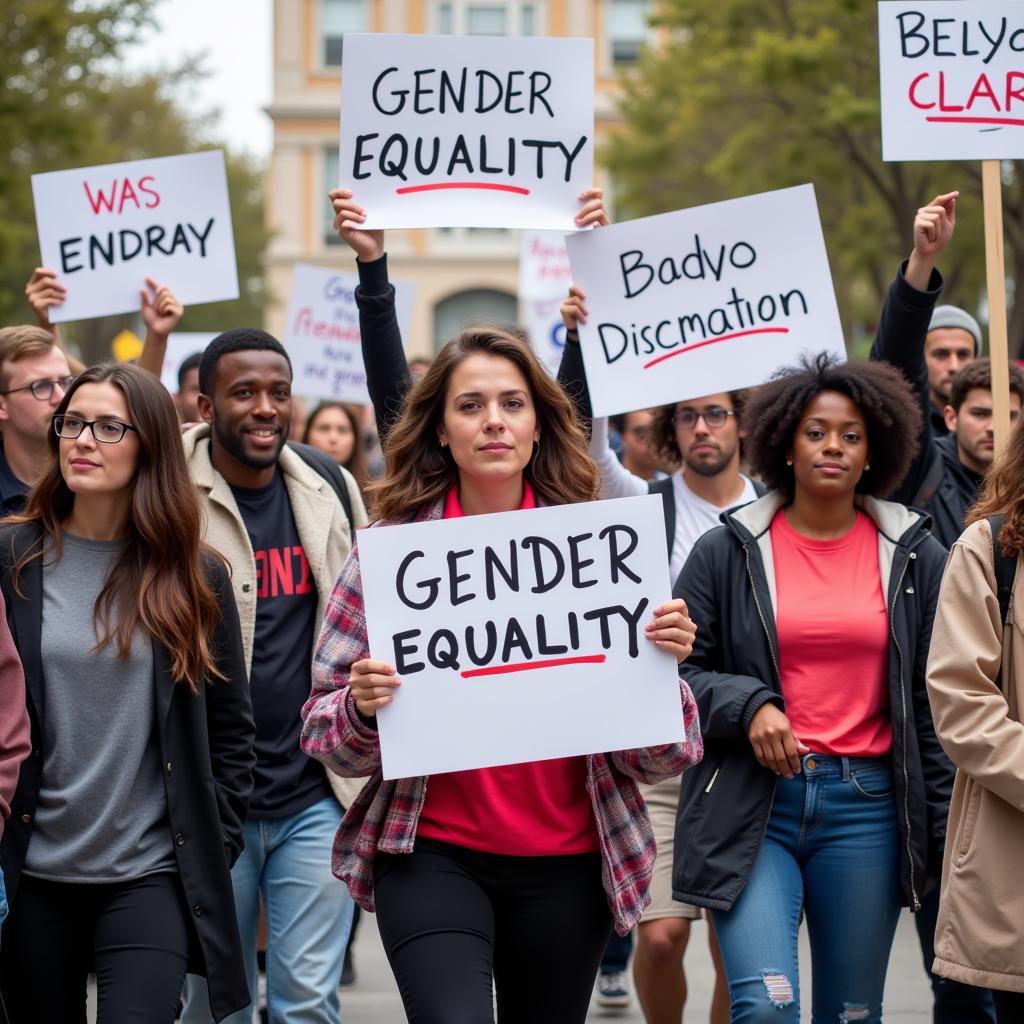The term “man-hating society” often surfaces in heated debates, but what does it truly mean? This phrase, while often misused and misinterpreted, reflects a sentiment felt by some individuals navigating a world where they perceive systematic bias against men. This article delves into the complexities surrounding this sensitive topic, exploring its origins, potential manifestations, and ways to foster understanding and bridge the divide.
 Gender Dynamics Misunderstood
Gender Dynamics Misunderstood
Unpacking the Phrase: Beyond the Surface
It’s crucial to approach the phrase “man-hating society” with nuance and sensitivity. Often, it’s used as a reactionary term, reflecting genuine feelings of frustration and marginalization experienced by some men. These feelings might stem from various societal structures, traditional gender roles, or personal experiences that have shaped their worldview.
However, it’s equally important to recognize that this phrase can be weaponized to silence legitimate concerns about gender inequality. By framing the conversation as an attack on men, it deflects from the systemic issues women continue to face.
 Advocating for Gender Equality
Advocating for Gender Equality
Root Causes and Manifestations
To understand the sentiment behind “man-hating society,” we need to examine potential root causes:
- Backlash against Feminism: Some individuals perceive the progress of feminist movements as a threat to traditional male privilege and power structures.
- Double Standards: Instances where men and women are held to different standards, particularly in family courts or certain social situations, can fuel feelings of injustice.
- Generalizations: Just as harmful stereotypes exist against women, men can also be unfairly categorized based on gender, leading to feelings of alienation.
Seeking Common Ground: Building Bridges, Not Walls
Instead of perpetuating a cycle of blame and resentment, it’s vital to foster empathy and understanding:
- Open Dialogue: Create safe spaces for open and honest conversations about gender roles, expectations, and experiences.
- Challenge Stereotypes: Actively challenge harmful stereotypes about both men and women, promoting respectful representations in media and everyday life.
- Focus on Shared Goals: Emphasize the commonalities between genders, focusing on shared goals like equality, respect, and opportunity for all.
Building a More Equitable Future
Moving forward requires a collective effort to dismantle harmful societal structures and create a world where everyone feels valued and respected. This involves:
- Promoting Positive Masculinity: Encourage healthy expressions of masculinity that value empathy, vulnerability, and respect for all genders.
- Addressing Systemic Issues: Advocate for policies and initiatives that address the root causes of gender inequality, such as pay gaps and discrimination.
- Celebrating Diversity: Embrace and celebrate the diversity of human experiences, acknowledging that gender exists on a spectrum and expressions of masculinity and femininity are not monolithic.
Conclusion
The conversation surrounding “man-hating society” is undeniably complex and emotionally charged. However, by approaching this topic with empathy, open-mindedness, and a commitment to understanding the perspectives of all involved, we can begin to bridge the divide and work towards building a more equitable and just society for everyone.